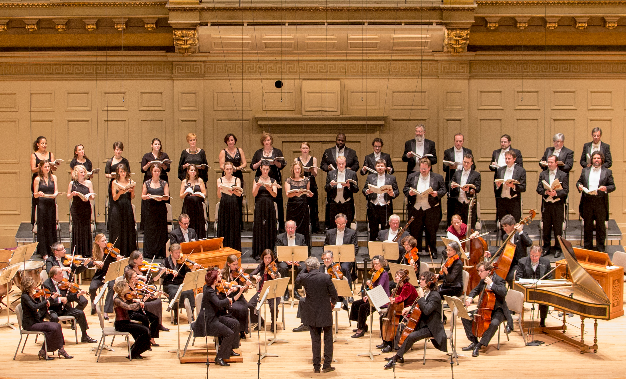Boston’s Handel and Haydn Society Turns 200
Claiming to be the oldest continuously performing orchestra in America, the Handel and Haydn Society celebrates 200 years this year. The Society gave the American premiere performances of Verdi’s Requiem in 1878 and Bach’s St. Matthew Passion in 1879.
The Society was created at the conclusion of the War of 1812, giving a performance of highlights from Handel’s Creation and Messiah. Following this performance, a group of 44 amateur choristers and instrumentalists formed the Handel and Haydn Society on April 13, 1815.
Both the New York Times and Symphony magazine published interesting articles about the Society, giving its history in some detail. Some interesting facts:
- The original chorus had 100 members: 90 men and 10 women. Only men could be members; women were invited guests. This situation lasted until 1967.
- The Society has commissioned choral works over the centuries, from such noted composers as John Knowles Paine, Horatio Parker, Randall Thompson, and John Tavener.
- In 1865 the chorus had 700 members; this settled down to about 300 in the latter part of the century.
- For the 200th anniversary celebration, the Society has commissioned a work by Gabriela Lena Frank that will be premiered at the 2015 Chorus America Conference on June 18 in Boston.
- The Society hired Thomas Dunn in 1967 after a very negative review by the new Boston Globe music critic Michael Steinberg, who complained about the size of the orchestra and chorus and their large sound. Maestro Dunn slimmed down the numbers in both the chorus and orchestra, and began performances of contemporary works.
- Mr. Dunn was succeeded by Christopher Hogwood, who transformed the Society into the use of period instruments by 1989.
- Mr. Hogwood was followed by Grant Llewellyn and Roger Norrington.
- Harry Christophs took over in 2008 and leads an orchestra & chorus with a $5 million budget.
To quote from Harry Christophs interview with Chester Lane in Symphony magazine:
The beauty of the period-instrument movement is the amazing knowledge all the players have of their own instruments — the history, the treatises. That’s what makes my job wonderful. As a conductor you can feed off the fantastic array of instruments in front of you… One of our big aims is trying to make the music sound new. I think it does sound fresh to an audience. It sounds alive. And a lot of people are coming to this for the first time. That’s exciting!”


No comments yet.
Add your comment